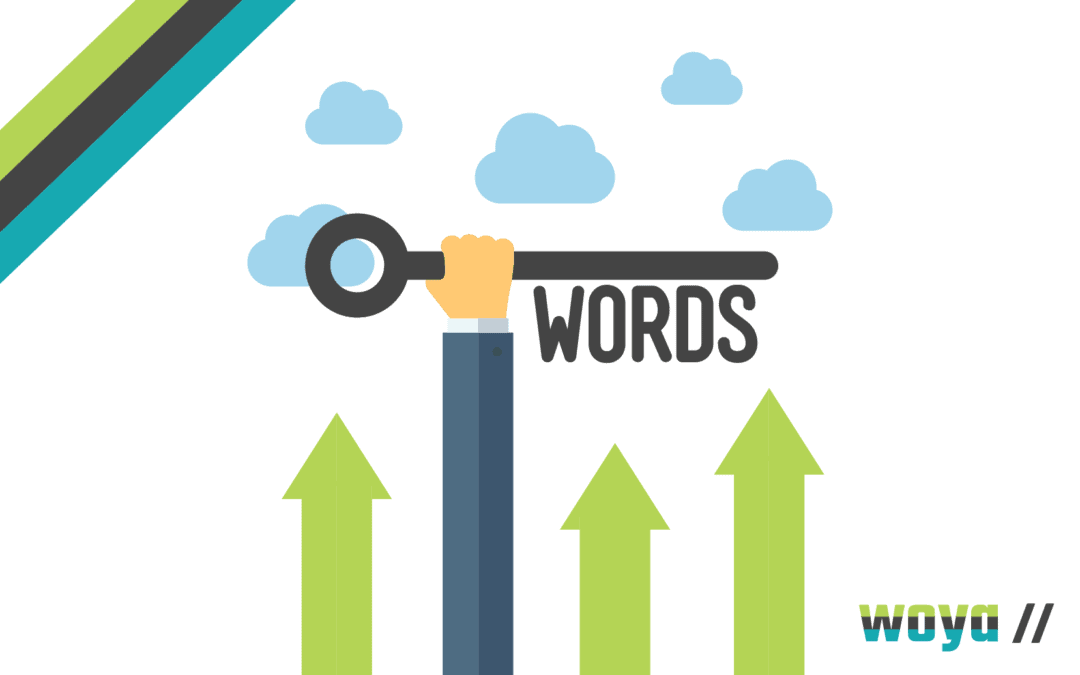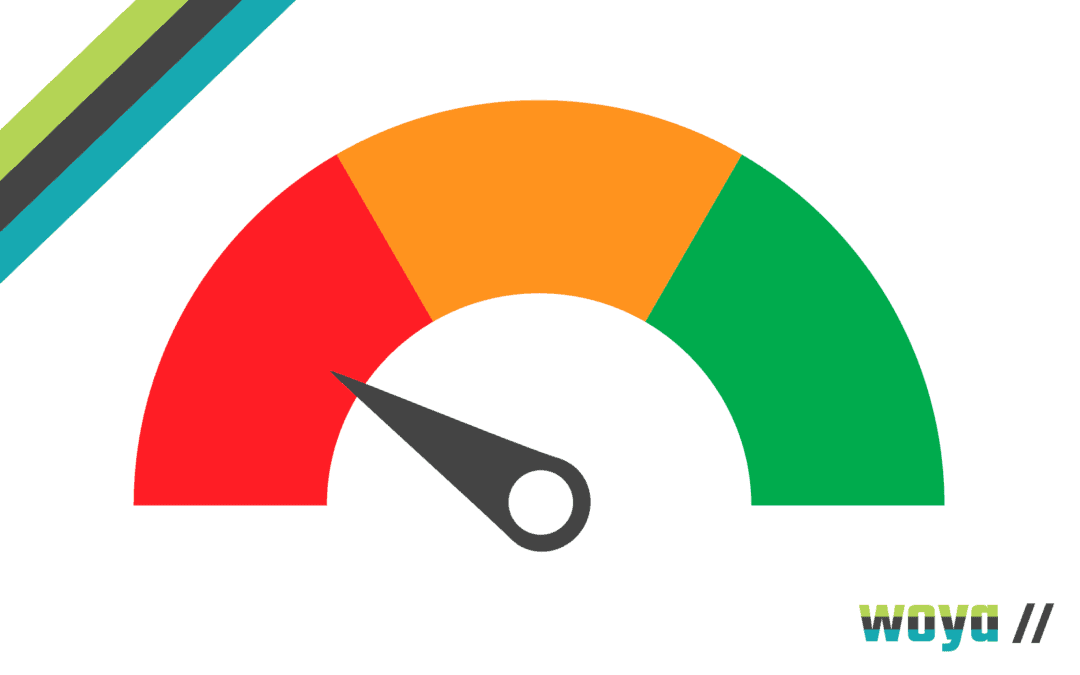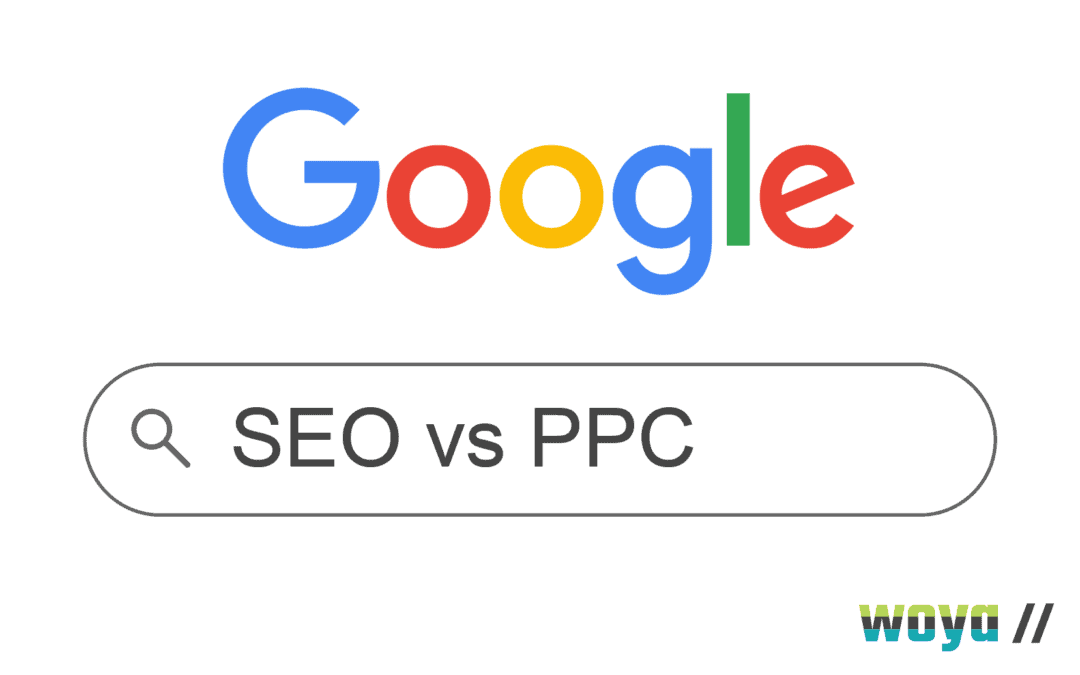Successful marketing is more than a one-hit-wonder and takes a long-term strategic effort. So, while we’re here to talk about SEO vs PPC, let’s be clear – the answer isn’t going to be straightforward or universal!
There are many variables to finding the optimal way to tackle your digital marketing, PR, and advertising, depending on (just as a few factors) your sector, aspirations, the market climate and what you have to spend.
Ultimately, the correct approach for your business depends on, well, your business, so it’s impossible to give a blissfully easy answer without a fair few caveats.
Here, the Woya team compares all the pros and cons, costs and benefits, side by side to help you decide where best to invest your budget.
The PPC vs SEO Debate Explained
Before we get into the details, let’s clarify the context behind these powerful publicity cousins.
-
- PPC (or pay per click) is paid advertising you can choose to use on Google Ads, search engines and social media to drive traffic to your site.
- SEO (or search engine optimisation) is an organic, systematic method of optimising your website and digital assets to naturally steer a larger user base to your business, primarily through direct hits on search engine enquiries.
While you can do both simultaneously, you’ll usually want to have a priority to dictate how you channel your resources.
Benefits of PPC as a Business Digital Marketing Resource
Paid advertising and organic searches might look the same to a casual user on the SERP (search engine results page). Still, they are considerably different, and you’ll get a varying response.
Consumer trust and click-through rates heavily favour organic search results since users know paid ads are promotions.
But, that doesn’t mean that PPC doesn’t have some advantages:
-
- Paid searches take pole position right at the top of the page, with the user initially seeing the top four on a PC or laptop and the highest three on a mobile device.
- Ads are under your control, so you get to decide what contact info, location details, sales points, or pricing shows in that space – whereas organic search picks and chooses the bits of content from your site it thinks are most relevant.
- Product Listing Ads (PLAs) are a great way to enrich your PPC promotion with a visual to show users what they’re about to click on, pushing up click-through rates.
You can decide how much you’re going to spend per day, so you’ll rarely see your clicks soaring (possibly without corresponding conversions!), resulting in a hefty dent in your bank balance without the sales to match – provided you set a fixed budget.
Targeted Online Ads Through PPC
One of the key reasons businesses invest in PPC is that it’s a form of sharply honed advertising where you select parameters to control who sees your ad.
The idea is that you’re only paying to advertise to people that match your demographic, selected against criteria such as previous visits, audience location, search language and specific keywords.
Behind that, you get a wealth of intelligence about how your marketing is performing, with things like:
-
- Tracked conversion rates.
- Information about the best performing keywords.
- Reports on the cost per click and conversion.
You can feed that analysis, often sourced through Google Analytics, back into your wider marketing strategy, and gain knowledge that you wouldn’t have with an organic search.
Pitfalls of PPC in the Wider Business Advertising Framework
Let’s balance out those plus points with a look at the disadvantages.
The first, perhaps obvious problem, is cost. While you can manage PPC campaigns, it requires time, effort, and regular tracking.
Small PPC budgets can run out in seconds, so if you want to capture market share and grow brand awareness on a big scale, you’ll equally have to invest a big amount.
If you find that you can’t keep up with the costs, your ads discontinue immediately, and any growing lead gen stops, so PPC is only as solid as the money you’re willing to pour into it.
The PPC Bidding Wars
Bidding wars are common, if not expected when using PPC.
Competitive keywords are in high demand, and it’s often the case that the largest players with huge marketing budgets knock out smaller rivals like a set of bowling pins.
Any time you launch a new PPC ad, you’re pinching a slice of the pie from somebody else, and if you have to keep upping the stakes to stay ahead, it can be disastrous.
Managing a Successful PPC Campaign
We’ll not get into a huge amount of detail here, but the multitude of PPC search advertising options can be more trouble than they’re worth.
For example, you’ll need to monitor results continually to compare text ads, graphics and product listings, refining your promotions even several times a day to get the most from your advertising spend.
PPC ads don’t run autonomously, and there are zero guarantees of results. Businesses need to invest time and knowledge in optimising every campaign, reviewing things like:
-
- Search engine positioning
- Click-through rates
- Quality scoring
- Keyword bids
People costs can include hiring a marketing agency or having a PPC team member who takes responsibility for your promotions, so it’s not just a question of paying some money to Google and hoping it will do the rest.
Finally, be aware that PPC is pretty easy to replicate.
If you’re running successful ads, it’s likely a matter of time before a competitor gets involved, potentially draining your returns, bidding against you, and potentially copying your sales funnel with minimal effort.
Advantages of Organic SEO to Drive Business Growth
Next, we’ll turn our attention to SEO – organic growth that is the gold standard of marketing best practises and often used alongside PPC as a sustainable advertising strategy.
It isn’t easy to pin down SEO into one series of steps since it’s a field that blends creativity with analytics, brand differentiation with audience engagement, and sales with social value.
SEO as a Growth Strategy
The objective of SEO is to enable your business to rank naturally on the SERP – hence the term organic.
Organic searches best match the search enquiry and appear underneath the paid ads or shopping pages. They are reliant on search engine bots to crawl your site, evaluate the quality of your content, index it, and then assess your authority.
The Google algorithm considers a huge number of markers to do so, and a digital marketing team will look at:
-
- Content marketing – publishing, creating and advertising targeted content.
- Technical SEO – the performance and capacity of your website infrastructure.
- On-page SEO – web page content, links, keywords, headings and title tags.
- Link building – building backlinks and internal links to establish authority.
- UX – the customer experience when interacting with your site, products and services.
Ranking isn’t simple, and SEO is complex, not least because it involves many elements. The continual algorithm updates mean you need to balance those factors against each other and can’t stay still.
The Pros of SEO
While SEO takes time to generate results, there are multiple advantages.
Organic SEO is cost-effective, and although you’ll pay for expertise from digital marketing professionals, the clicks and conversions cost nothing. It’s often a great option for small or growing businesses because you can manage your monthly outgoings, potentially scaling your company exponentially without a corresponding spike in promotional costs.
Essentially, SEO is sustainable. Your returns don’t stop when you stop paying, and you can build on a strong ranking to showcase your business to customers around the clock.
If you’ve optimised your site and keep contributing valuable content, you’ll usually see fairly stable rankings, whereas PPC ads fluctuate wildly depending on price competition.
Other benefits to consider include:
-
- Flexible content creation targeted to each step of your sales funnel without prioritising middle-ranking keywords to get the best return for your ad spend.
- Increased click-throughs – customers know that paid ads aren’t the results Google thinks they want to see. The average organic result gets ten times more clicks than paid ads, even though they’re displayed underneath.
- Positioning – visibility is key, and if your content regularly crops up through organic searches, you establish trust and brand authority, with ongoing positive benefits.
Most users place far higher credibility on organic searches and skip past ads because natural results are perceived as more trustworthy.
The strategic advantage is that, although it takes more time and effort to gain organic search visibility, once you’ve established yourself in this way, your competitors can’t copy your techniques, they can’t buy you out of the market, and they can’t nab your engaged customer base.
Relying on PPC isn’t something we’d recommend (not that it doesn’t have a well-earned place in a well-rounded digital marketing approach!), but it’s more a tool to boost sales and visibility than a way to get ahead of competitors.
The Downside of Relying on SEO to Grow Your Customer Audience
As with anything, there is a flipside. Organic traffic, as we’ve mentioned, isn’t a lightning-fast outcome.
If you’re beginning a new SEO campaign, you need to be conscious that mega-corporations like Amazon and eBay may dominate popular search terms. Of course, the same applies to PPC, where you’re going to be competing directly on a cost basis for the same keywords!
The other caveat is that organic SEO requires sustainable, ongoing expertise and talent, tackling tasks such as:
-
- Creating valuable content assets to achieve visibility.
- Handling safe, credible link-building challenges.
- Analysing data, conversions, and stumbling blocks in your funnel.
- Technical SEO to ensure your site or app loads fast, works flawlessly and provides a great level of responsiveness and interaction.
As an ongoing process, organic SEO means making tweaks and improvements as you go. It isn’t ever possible to optimise a site 100%, and leave it be – there is always work required.
Choosing Between SEO vs PPC – the Conclusion
Both PPC and organic SEO are valuable and can make a profound difference to your business performance, brand awareness and bottom line – but neither are resources you can use once and forget as a standalone, one-off project.
SEO is an investment in the ongoing success of your company. It typically means working with an experienced digital marketing team to create a future-proof strategy and work through that methodically, targeting all of the many elements of organic search.
PPC is a great way to jump to the top of the Google page, but it should be used carefully for lead-gen or to develop a good understanding of the data behind your traffic.
As a quick recap:






